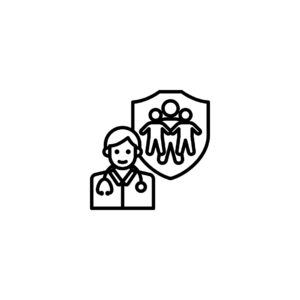Description
Overview of Bachelor of Science in Radiology & Imaging Technology (BRIT)
The Bachelor of Science in Radiology & Imaging Technology (BRIT) is an undergraduate program designed to prepare students for careers in the medical imaging field. This program focuses on the use of advanced imaging technologies and techniques to assist in diagnosing and treating medical conditions. Graduates will gain the necessary skills to operate imaging equipment, understand radiologic principles, and provide patient care.
Core Areas of Study in BRIT
Radiography
Fundamental principles and techniques of radiography, including the production and interpretation of X-ray images.
Medical Imaging Modalities
In-depth study of various imaging technologies such as:
Magnetic Resonance Imaging (MRI)
Computed Tomography (CT)
Ultrasound
Nuclear Medicine
Interventional Radiology
Anatomy and Physiology
Comprehensive understanding of human anatomy and physiology to accurately interpret imaging results.
Radiation Physics and Safety
Principles of radiation physics, dosage calculations, and safety protocols to minimize exposure to patients and staff.
Patient Care and Communication
Techniques for effectively communicating with patients and providing compassionate care during imaging procedures.
Pathophysiology
Study of disease processes and how they influence imaging results, enhancing the ability to work collaboratively with physicians.
Healthcare Ethics and Law
Understanding legal and ethical issues in the healthcare environment, including patient rights and confidentiality.
Clinical Practicum
Practical training in clinical settings, allowing students to apply their knowledge and gain hands-on experience in imaging procedures and patient care.
Health Informatics
Introduction to health information systems and their role in managing imaging data and patient records.
Curriculum Structure
A typical BRIT program includes:
Core Courses: Required courses covering the foundational aspects of radiology and imaging technology.
Elective Courses: Options to specialize in areas of interest, such as advanced imaging techniques or specialization in particular modalities.
Clinical Practicum: Internships or clinical rotations providing real-world experience in hospitals or imaging centers.
Capstone Project: A culminating project that integrates learning experiences and allows students to research or develop solutions to issues in the field.
Admission Requirements
Admission to a BRIT program typically requires:
A high school diploma or equivalent with a strong emphasis on science (biology, chemistry) and mathematics.
A satisfactory GPA, often with prerequisites in science courses.
Letters of recommendation (sometimes).
A personal statement or essay discussing the applicant’s interest in radiology and imaging technology.
Skills Developed in a BRIT Program
Graduates of the Bachelor of Science in Radiology & Imaging Technology program will develop the following skills:
Technical Proficiency: Skilled in operating and maintaining various imaging equipment and technologies.
Critical Thinking: Ability to analyze images, recognize abnormalities, and make informed decisions regarding imaging processes.
Patient-Centered Care: Understanding of how to effectively communicate with patients, ensuring their comfort and safety during procedures.
Team Collaboration: Skills to work effectively within multidisciplinary teams, including radiologists and healthcare providers.
Attention to Detail: Precision in the execution of imaging protocols and adherence to safety regulations.
Career Opportunities
Graduates of the BRIT program can pursue various careers in the healthcare sector, including:
Radiologic Technologist
Performing diagnostic imaging procedures using X-ray machines and assisting radiologists in interpreting results.
MRI Technologist
Specializing in MRI procedures, operating MRI machines, and ensuring patient safety throughout the imaging process.
CT Technologist
Focusing on performing and interpreting CT scans, working closely with physicians to facilitate diagnosis.
Ultrasound Technician (Sonographer)
Performing ultrasound examinations to assess various medical conditions and assisting in obstetric and gynecological imaging.
Nuclear Medicine Technologist
Administering radioactive materials for diagnostic imaging and evaluating images produced by nuclear medicine equipment.
Radiation Therapist
Delivering targeted radiation treatments to patients with cancer, collaborating with oncologists and other healthcare professionals.
Health Information Manager
Managing medical imaging data and ensuring effective communication between imaging departments and healthcare providers.
Conclusion
The Bachelor of Science in Radiology & Imaging Technology (BRIT) prepares students for rewarding careers in medical imaging, equipping them with essential skills and knowledge to support patient care and diagnostics. With advancements in imaging technologies, this field continues to grow, providing numerous opportunities for graduates. If you have any more questions or need additional information about the BRIT program, feel free to ask!









